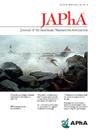Community pharmacy chlamydia and gonorrhea test-to-treat program: Development of an implementation toolkit
IF 2.5
4区 医学
Q3 PHARMACOLOGY & PHARMACY
Journal of the American Pharmacists Association
Pub Date : 2024-08-24
DOI:10.1016/j.japh.2024.102222
引用次数: 0
Abstract
Background
Sexually transmitted infection (STI) surveillance showed more than 2.5 million cases of chlamydia, gonorrhea, and syphilis nationally in the United States in 2022. Individuals often seek out nonemergency medical care at pharmacies. This makes community pharmacies well-positioned to address rising STI rates by offering services to screen and treat common STIs. A local health department, an independent pharmacy, and a school of pharmacy in Pennsylvania partnered to implement a test-to-treat service for chlamydia and gonorrhea within a pharmacy. This pilot program utilized the following: (1) patient self-collected test kits for chlamydia and gonorrhea screening and; (2) standing orders for treatment at the pharmacy. One goal of this pilot was to develop resources others can use to implement similar pharmacy-based chlamydia and gonorrhea testing and treatment services.
Objective
Develop an expert-informed implementation toolkit for a chlamydia and gonorrhea test-to-treat program at a community pharmacy.
Methods
The “How to Build an Implementation Toolkit from Start to Finish” framework from the University of California at Berkeley was used to design the initial toolkit outline. Toolkit content was triangulated from 3 sources: (1) comprehensive literature review; (2) pilot program implementation team meetings; and (3) feedback from public health and other experts. Pilot program partners met regularly to review and edit the toolkit. The draft toolkit was then reviewed by outside experts and potential end-users.
Results
An 11-item toolkit was developed. Toolkit contents were reviewed by 11 outside experts and potential end-users. Toolkit resources included STI training resources for pharmacy teams, testing and treatment standing orders, pharmacy treatment screening form, marketing strategies, patient education materials, sample workflow, essential supply list, and other key resources.
Conclusion
Pharmacies may need additional resources for STI testing and treatment program implementation. Toolkit resources developed from this pilot program may help pharmacies overcome implementation barriers for similar programs.
社区药房衣原体和淋病检测治疗计划:开发实施工具包。
背景:性传播感染(STI)监测显示,2022 年美国全国衣原体、淋病和梅毒病例超过 250 万例。人们经常在药店寻求非急诊医疗服务。因此,社区药房完全有能力通过提供筛查和治疗常见性传播疾病的服务来应对不断上升的性传播疾病发病率。宾夕法尼亚州的一个地方卫生部门、一家独立药店和一所药学院合作,在药店内开展了衣原体和淋病的检测治疗服务。该试点项目利用:(1)患者自取的衣原体和淋病筛查试剂盒;(2)药房的长期治疗订单。该试点项目的目标之一是开发资源,供其他机构用于实施类似的药房衣原体和淋病检测与治疗服务:目标:为社区药房的衣原体和淋病检测治疗项目开发一套由专家提供信息的实施工具包:方法:采用加州大学伯克利分校的 "如何从头到尾构建实施工具包 "框架来设计工具包的初始大纲。工具包的内容从三个来源进行了三角测量:(1) 综合文献回顾;(2) 试点计划实施团队会议;(3) 来自公共卫生和其他专家的反馈。试点计划合作伙伴定期举行会议,审查和编辑工具包。随后,外部专家和潜在最终用户对工具包草案进行了审查:开发了一个包含 11 个项目的工具包。11 位外部专家和潜在最终用户审查了工具包的内容。工具包资源包括为药房团队提供的性传播感染培训资源、检测和治疗常备单、药房治疗筛查表、营销策略、患者教育材料、工作流程样本、基本供应清单以及其他关键资源:结论:药房在实施性传播感染检测和治疗项目时可能需要额外的资源。本试点项目开发的工具包资源可帮助药房克服类似项目的实施障碍。
本文章由计算机程序翻译,如有差异,请以英文原文为准。
求助全文
约1分钟内获得全文
求助全文
来源期刊
CiteScore
3.30
自引率
14.30%
发文量
336
审稿时长
46 days
期刊介绍:
The Journal of the American Pharmacists Association is the official peer-reviewed journal of the American Pharmacists Association (APhA), providing information on pharmaceutical care, drug therapy, diseases and other health issues, trends in pharmacy practice and therapeutics, informed opinion, and original research. JAPhA publishes original research, reviews, experiences, and opinion articles that link science to contemporary pharmacy practice to improve patient care.

 求助内容:
求助内容: 应助结果提醒方式:
应助结果提醒方式:


